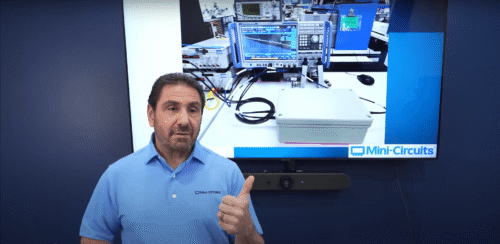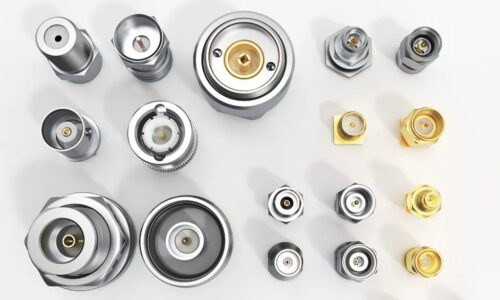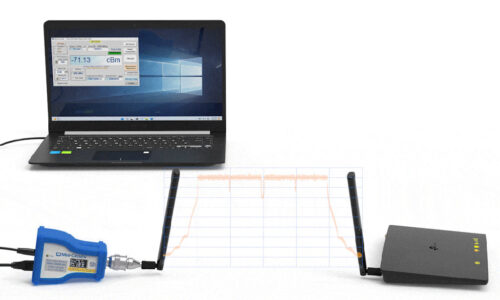Advantages of cascading reflectionless filters
The insertion loss curves for the conventional filter exhibit an expected increase in stopband rejection when two filters are cascaded in series. However, obvious ripple appears across the stopband in the two-section curve. This is due to the unstable phase relationship between the through-signal and reflected signal. Additionally, unwanted ripple is present in the passband close to the band edge of the two-section curve. This is a result of return loss degradation in the passband and reflections in the transition. By contrast, the insertion loss performance for the reflectionless filter repeats itself nicely when cascaded in 2 and 3 sections without any of the ripples or distortion seen in the case of the conventional filter.
Figures 5e through 5h show the effect on return loss when the two types of filters are cascaded in multiple sections. The conventional filter exhibits significant degradation in input and output return loss in the passband when cascaded in two sections – by as much as nearly 20 dB in some regions. When the reflectionless filter is cascaded in two sections, on the other hand, input and output return loss varies over the passband, but the same degradation is not evident, and return loss actually increases at some frequencies relative to that of a single filter. This illustrates that an improvement in return loss in the passband and the stopband can be realized by cascading reflectionless filters versus conventional filters.
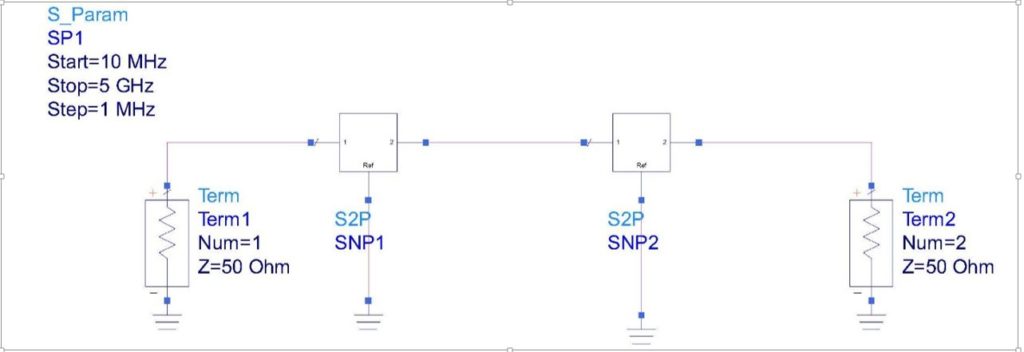
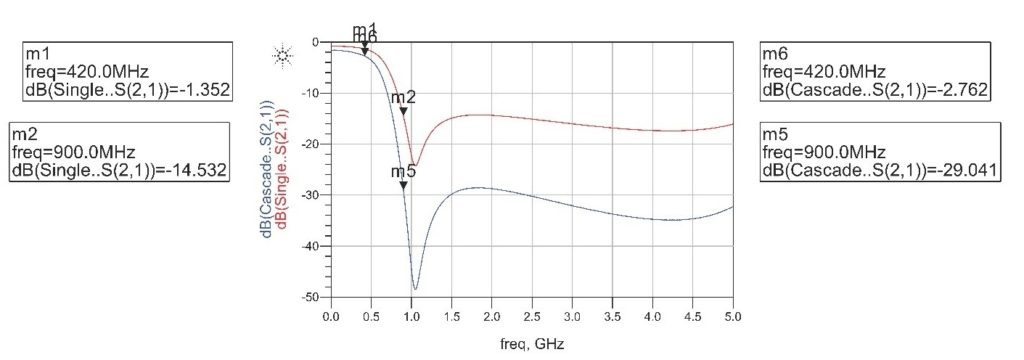
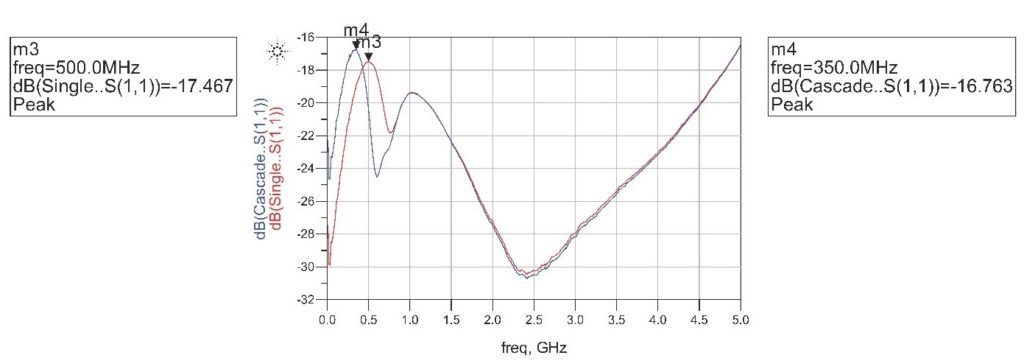
Test results
To further validate the advantages of reflectionless filters in cascaded configuration, testing was performed to compare reflectionless filter XLF-421+ to conventional filter NLP-550+ when cascaded. The units were soldered on test boards and the test boards were interconnected in series and connected to a vector network analyzer, applying autoport extension. The reflectionless filter was tested in 1, 2 and 3 sections, and the conventional filter was tested in 1 and 2 sections. Insertion loss, input and output return loss, and group delay were swept from DC to 5000 MHz for each structure. The measurement data is presented in figures 5a through 5j.


The insertion loss curves for the conventional filter exhibit an expected increase in stopband rejection when two filters are cascaded in series. However, obvious ripple appears across the stopband in the two-section curve. This is due to the unstable phase relationship between the through-signal and reflected signal. Additionally, unwanted ripple is present in the passband close to the band edge of the two-section curve. This is a result of return loss degradation in the passband and reflections in the transition. By contrast, the insertion loss performance for the reflectionless filter repeats itself nicely when cascaded in 2 and 3 sections without any of the ripples or distortion seen in the case of the conventional filter.
Figures 5e through 5h show the effect on return loss when the two types of filters are cascaded in multiple sections. The conventional filter exhibits significant degradation in input and output return loss in the passband when cascaded in two sections – by as much as nearly 20 dB in some regions. When the reflectionless filter is cascaded in two sections, on the other hand, input and output return loss varies over the passband, but the same degradation is not evident, and return loss actually increases at some frequencies relative to that of a single filter. This illustrates that an improvement in return loss in the passband and the stopband can be realized by cascading reflectionless filters versus conventional filters.

Better search tool, faster design cycle
Lastly, group delay (figures 5i and 5j) for two cascaded conventional filters presents wild variations over frequency, which results in signal distortion in the passband. By comparision, group delay remains flat through the passband, transition, and stopband when the reflectionless filter is cascaded in 2 and 3 sections. This shows that reflectionless filters essentially eliminate distortion related to phase instability when cascaded in series.

Conclusion
One advantage of reflectionless filters is the capability to cascade filters in multiple sections while virtually eliminating the detrimental effects of signal reflections. This makes these filters extremely flexible building blocks for applications where greater stopband rejection or sharper roll-off are desired, allowing significant improvements in overall system performance.


